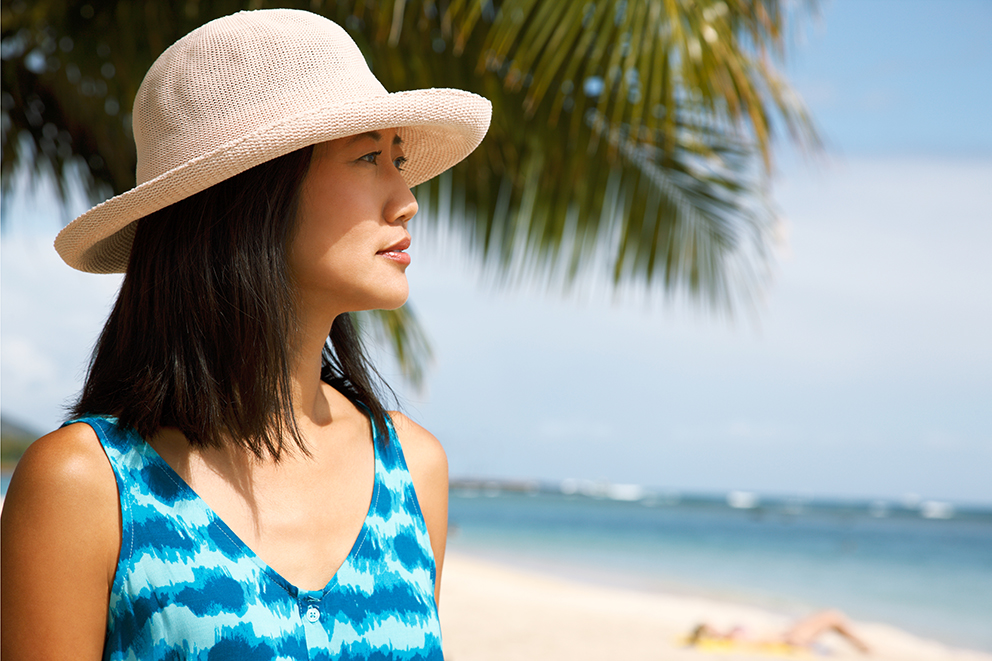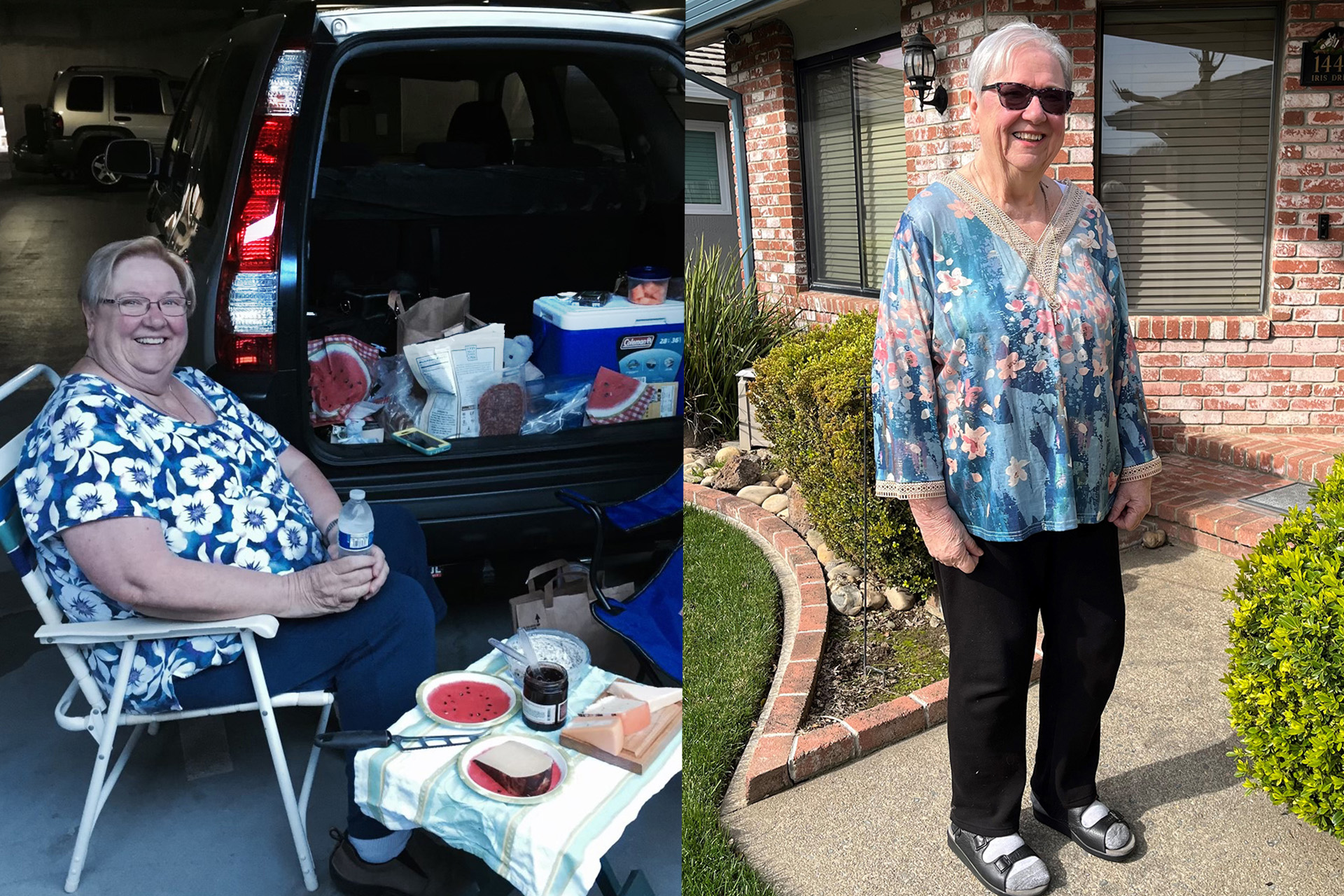With summer just around the corner, Wendy Huber, MD, Kaiser Permanente dermatologist, offers advice for protecting your skin from the sun.

Many of you are probably looking forward to the summer season — warmer temperatures, vacations, and a chance to enjoy outdoor activities without the cold, wind, and rain. As we enjoy these activities, it is always important to protect our skin from the damaging rays of the sun. Ultraviolet light from the sun is the main cause of most skin cancers.
Skin cancer is the most common form of cancer in the United States. There are an estimated 2 million cases of it every year.
Who is most at risk for developing skin cancers? Those with very fair skin who will burn or freckle easily when exposed to the sun and rarely develop a tan; those who have had high levels of exposure to UV light including sunlight and tanning beds; and those with a history of multiple sunburns especially during childhood. Older people are more at risk too because they have had many more years of exposure to sunlight than younger folks.
Apply and Reapply Sunscreen
Sun exposure can also cause fine and coarse wrinkling of the skin, freckles, and uneven coloring or pigmentation of the skin. And it’s cumulative. I tell my patients that the single best thing they can do to prevent skin cancer and minimize signs of skin aging is to wear sunscreen every day with an SPF of 30 or more. Always remember to apply sunscreen 30 minutes before going out and to reapply every 2 hours. You should also reapply it after swimming or excessive sweating.
When deciding what kind of sunscreen to use, I tell patients to look for a water resistant, broad spectrum sunscreen that protects against UVA and UVB rays and has a SPF 30 or higher. Look for sunscreens with physical blockers such as titanium dioxide and zinc oxide as these chemicals deflect the ultraviolet rays from the skin.
When it comes to protecting children, the guidance is basically the same: Apply sunscreen every day. However, sunscreens are not recommended for infants younger than 6 months due to their sensitive skin. Instead, dress the baby in lightweight clothing that covers the arms and legs and protect the baby’s face, neck, and ears with a wide-brimmed hat. Take walks early in the morning, before 10 a.m., or after 4 p.m., and place a sun-protective cover on the baby stroller. After 6 months, it is safe to use SPF 30 sunscreen.
Wear Protective Clothing
I also recommend wearing clothing with an ultraviolet protective factor (UPF) whenever possible. Clothing rated UPF 40 or more will block more than 97 percent of ultraviolet light and, unlike sunscreen, does not have to be reapplied throughout the day. There are also chlorine-resistant swim tights and swim shirts made from this fabric. I especially encourage this type of swimwear for children, since some kids do not like to have lotions applied all over their bodies.
Less exposed skin allows for less sunscreen. Remember to choose a broad-brimmed hat. Avoid straw hats, which let through too much light. If you hold your hat up to the sun and you can see light coming through, it is not protective enough.
What You Need to Know About Vitamin D
Aside from what you put on your body, consider what you put in it. People need to make sure they are getting enough Vitamin D as sunscreen can prevent our skin from making it. But here’s the catch: Don’t use the need for Vitamin D as the reason to spend hours in the sun. The American Academy of Dermatology (AAD) recommends getting Vitamin D from a healthy diet that includes foods naturally rich in Vitamin D, foods and beverages fortified with it, or from supplements that contain it. Foods high in Vitamin D include fish, chicken, milk, cheese, fortified orange juice, and fortified breakfast cereals. If you are concerned about your Vitamin D intake, please talk with your doctor.
Avoid Tanning Beds
Some people may think getting their sun indoors is safer. Not so. Data show more than 400,000 cases of skin cancer in the United States each year are linked to indoor tanning. More people develop skin cancer because of indoor tanning than develop lung cancer because of smoking. According to the AAD, even one tanning booth session can increase a person’s risk of developing melanoma by 20 percent. Tanning beds are definitely not recommended.
Many of us associate warm weather with sunburns since we tend to choose clothing that is lightweight and exposes more of our skin to the sun when it is hot. But remember, sunscreen is important to use even when it is cloudy, cool, or rainy. Clouds only block about 20 percent of the ultraviolet rays, so it is very easy to get burned if you are out too long without sunscreen on a cloudy day.
No matter what the weather or season, it’s always the right time to take care of your skin.





This Post Has 4 Comments
Here’s more information on sunscreen and reef damage: https://www.bereefsafe.com
Take away: don’t buy or use sunscreens containing oxybenzone.
Thanks, Dr. Huber!
I think you should lead with wearing more cover up clothing rather then sunscreen. Lotions are creating problems with the environment (see recent studies in Hawaii) and also clogging drains and a problem for water treatment plants. I’m an avid hiker who has had skin cancer and dress the part.
There is a link between skin cancer and diet. The foods we eat can inhibit or stimulate melanoma. I’m surprised this wasn’t mentioned.
https://www.nutritionadvance.com/scary-real-link-diet-skin-cancer/
Very informative. Thank you.